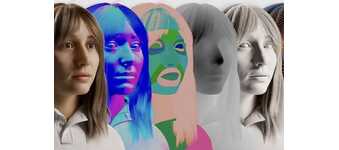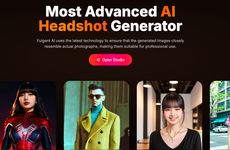
NVIDIA Researchers Create a Realistic Style-Based Generator
References: youtube & designtaxi
The algorithm for incredibly realistic AI-powered portraits is outlined in a paper published by researchers from computer game company NVIDIA. It utilizes the Generative Adversarial Network (GAN) which was first released back in 2014 but now it operates in conjunction with artificial intelligence technology to deliver a high-quality product.
For the realistic AI-powered portraits, NVIDIA feeds the algorithm a series of photos and the technology, in turn, blends the images together. This method is referred to in the tech universe as "style transfer." The end result often boasts an entirely new person.
Aside from faces, the Generative Adversarial Network and the artificial intelligence algorithm can work together to also produce images of other objects — from fictitious interiors of buildings to cats and vehicles.
For the realistic AI-powered portraits, NVIDIA feeds the algorithm a series of photos and the technology, in turn, blends the images together. This method is referred to in the tech universe as "style transfer." The end result often boasts an entirely new person.
Aside from faces, the Generative Adversarial Network and the artificial intelligence algorithm can work together to also produce images of other objects — from fictitious interiors of buildings to cats and vehicles.
Trend Themes
1. AI-powered Portraits - Artificial intelligence technology can now create incredibly realistic portraits utilizing the Generative Adversarial Network (GAN), which was first released back in 2014.
2. Style-based Generation - The blending of images through the use of 'style transfer' offers disruptive innovation opportunities for the creation of entirely new people and objects, ranging from buildings to cats and vehicles.
3. Generative Adversarial Network - The Generative Adversarial Network provides endless possibilities for the creation of realistic AI-generated images of all kinds, potentially disrupting the field of visual arts and design.
Industry Implications
1. Visual Arts - The technology behind AI-powered portraits has the potential to disrupt the traditional practices and techniques of visual artists.
2. Advertising and Marketing - The use of realistic AI-generated images could offer companies new and innovative opportunities for their advertising and marketing campaigns.
3. Architecture and Design - The ability to create AI-generated images of buildings and interiors could revolutionize the visualization and design process, disrupting the architecture and design industries.
1.1
Score
Popularity
Activity
Freshness















